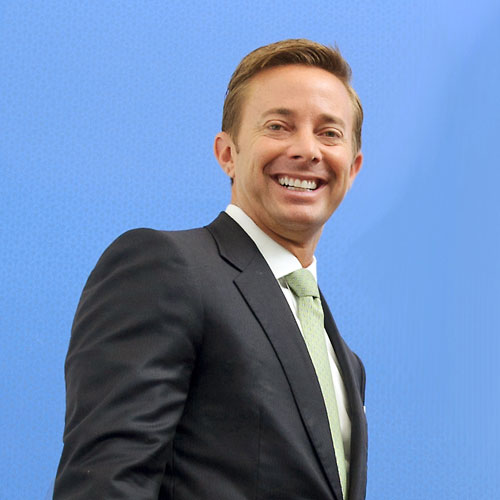UnitedHealth Group realized that it needed to do more than just sell health care to the Hispanic community. To truly reach the community, the corporation also needed to provide information, outreach, and an understanding of the matter. Russell Bennett was the man to spearhead the strategy.
Bennett serves as the vice president of Latino health solutions for UnitedHealth Group (UHG). In this role, he leads a company-wide effort to develop Hispanic-focused materials, products where they are needed, and services to help ensure that UHG is providing its Hispanic customers top-quality service.
His team’s outstanding efforts have been recognized with multiple awards over the past dozen years. Three of the awards he is most proud of are recognitions granted by the US Surgeon General, the National Hispanic Medical Association, and the International Community Foundation, each for different aspects of innovative work to improve the overall Hispanic health.
Bennett and his team also make sure that the materials and services they provide are delivered in culturally sensitive and competent ways. It’s not just about translating materials into Spanish; it’s about delivering services with a bilingual excellence. Bennett refers to it as “trans-creation”: offering the same message, but not necessarily in the same words.
“For years now, we’ve said, ‘Let’s see how this document looks when it’s trans-created to Spanish,’” Bennett says. “Is it giving the same message? Are people going to react to it in Spanish the way they react to it in English? Are they going to learn the same things?”
Bennett started in this role when about thirteen years ago, UHG recognized the need to reach out to the growing population of Spanish-preference Hispanics in a different way. Bennett had previously worked as the founding executive director of the US-Mexico Border Health Commission. He had lived in Mexico for almost thirty years, which helped him develop a strong understanding of the culture.
When UHG was seeking someone to lead the formation of this unit, putting Bennett in charge made perfect sense. He is the Spanish language media spokesman for several of the company’s initiatives. “I think I fit the profile for understanding business, marketing, Latin America and the US Hispanic population,” he says.
Bennett conducts presentations around the country on innovative ways to improve Hispanic health. He recently asked the National Hispanic Medical Association to develop a research paper on “Increasing Hispanic Enrollment in Health Coverage—Barriers and Successful Strategies.” The conclusions of the paper have informed various radio media tours and educational TV capsules Bennett has developed over the past few months.
Companies of all sizes approach UHG because they know about its expertise to help them engage their Hispanic workers and families about their health. These companies want to know what Bennett’s team can do to give their Hispanic employees what they need to understand the importance of living a healthy lifestyle and how to cost-effectively use their benefits.
For example, many countries don’t have the same concept of urgent care that exists in the US. People will often go to the emergency room for issues that could have been solved with primary care. Emergency room visits are one of the most costly ways to receive medical attention. Bennett’s team helps companies assist their Hispanic employees to understand these type of situations.
“If people don’t understand that they can actually choose their level of care, then the system suffers because they may not be getting the right level of care, when they’d be very happy to do it correctly if they understood it,” Bennett says.
Educating the community about health care is a large part of Bennett’s job and his group’s initiatives make it happen. One of these initiatives includes placing health kiosks at work sites for employees, many of whom do not have Internet access either during the workday or at home. UHG provides health, lifestyle, and insurance information that can be used at the worksite, at home, or on the go.
“I want to continue to innovate and really apply new communication technologies to improving Hispanic health.”
UHG is now expanding the kiosk initiative in other areas such as Hispanic-focused supermarkets and the feedback has been positive. At these Kiosks, people can print the articles and take them home. Shoppers might print out a healthy recipe or look up articles on a chronic disease. The website also contains fotonovelas, or animated photo stories that deliver health information in a more engaging way.
UHG offers health insurance and also rewards those who are interested in the subject. In 2007, the company started a scholarship program through the United Health Foundation that grants scholarships to students studying in health care fields. The Diverse Scholars Program now awards $2 million per year, of which about $600,000 is targeted towards encouraging more Hispanic students to choose and complete health care careers.
“I get to go to some of the scholarship awards events and to meet some of the students. It is inspiring to meet some of these young people and their parents,” Bennett says. “Some of them are the first ones in their family to go to college or into the medical field.”
With the Hispanic population being the fastest growing segment in the US, Hispanics will account for 40 percent of the labor force growth by 2020. Bennett and his team are responding with services that will be increasingly important. And as the Hispanic population grows, Bennett would like to see the same for UHG’s innovative practices.
Going forward, Bennett’s hope is that more Hispanic patients will be able to visit doctors virtually. Hispanics make up around 18 percent of the population, but only four to five percent of doctors are Hispanic. Bennett believes that if patients have the chance to see a doctor who understands their language and culture, even if miles separate them, it could go a long way towards improving health.
Other innovative measures would include UHG expanding its bilingual health education kiosks and even engaging Hispanics more through social media channels—whatever it takes to get the right information to the right person at the right time.
“I want to continue to innovate and really apply new communication technologies to improving Hispanic health,” Bennett says. “I think that tele-medicine and virtual visits are beginning to take hold in our company and will continue to grow.”

